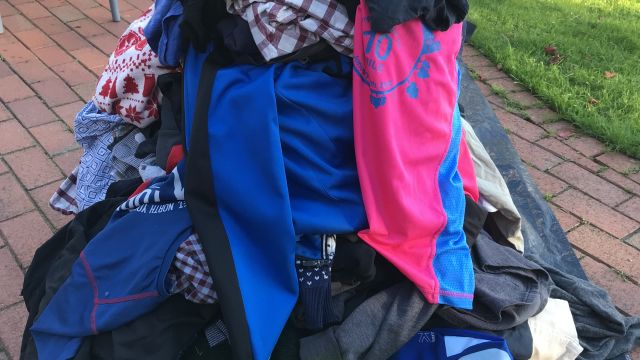
Fashion
How much clothing do you own?
With our #ZeroWasteClothing campaign, which we’re running throughout COP 26, we’re aiming to make it easier for people to understand what we can all do to reduce the environmental impacts of the clothing we wear.
In putting the campaign together, we’ve spoken with local industry experts to get our heads around what is undoubtedly a complex issue, including Leeds University academic Dr Mark Sumner - who we’ll be joining us on Facebook for a live chat next Tuesday.
This pie-chart summarises where clothing-related climate emissions come from.
You’ll notice that growing the crops/making the synthetic materials are big contributors to greenhouse gas emissions, as are all the processes relating to making the clothes themselves.

It might also surprise you that around 20% of emissions come from how we look after the clothes that we own - washing, drying and ironing our clothes.
All of this matters - as it’s estimated that the clothing industry is responsible for around 10% of global climate emissions.
But at times it can feel hard to know what to do.
Through our #ZeroWasteClothes campaign, we’re exploring three main areas we believe we can make a difference:
- Things we can do as individuals
- Things we can do together - as a city
- Ways we can influence Governments and businesses to do more
One thing we can do as individuals is to look at the clothing we own, and think about the choices we each make.
Rob from Zero Waste Leeds did this earlier this week.
He started by putting all his clothes in a big pile, weighing them, and counting them.

It turns out he owns 150 items of clothing - weighing in at 25kg.
As it happens, this is the equivalent of the amount of clothing that the average person in the UK buys each year.
Over half of the clothing that Rob owns is made of synthetic fibres, around a quarter of it is cotton, and around one in ten items are made of wool.
And as is often pointed to in research, there was plenty of clothing in there that Rob hadn’t worn for months, or even years. So he had no trouble filling two large bags that he took to his local charity shop.

Whilst working his way through the pile of clothes, he also made a note of the brands he bought most clothing from. Aldi, Marks and Spencer and Howies were the top 3.
One of the things we can do, to try to reduce the environmental impacts of the clothing industry - is to let businesses know that we care about this - and to ask them what they’re doing to reduce the impact that they have through the choices they make.
So Rob’s contacted Marks and Spencer, Aldi, and Howies, asking them for more information. So far, he's had a response from Aldi, who pointed him to their website. He's not heard back from M&S, but he's shared links to relevant information on their website, and he's also shared some info he found on the Howies website.
Are you inspired to do the same?
Let us know on social media if you do a wardrobe audit - it's a great starting point for thinking about how to reduce the impacts of the clothes you wear.
How many items of clothing do you own? Are there things that you haven’t worn for years? Might there be some things that could be given a new lease of life with a little repair or upcycling? Or is it time to donate some stuff to a charity shop (find your nearest one on our map) or sell online?
And which brands do you buy from most? Why not pick the top three, and get in touch with them on social media? Tell them that you care about the environmental impacts of the clothes you wear - and ask them what they’re doing to reduce those impacts - Fashion Revolution have tips on how to do this.
And don’t forget to tell your friends and family that you care about this too - together we can make a real difference!